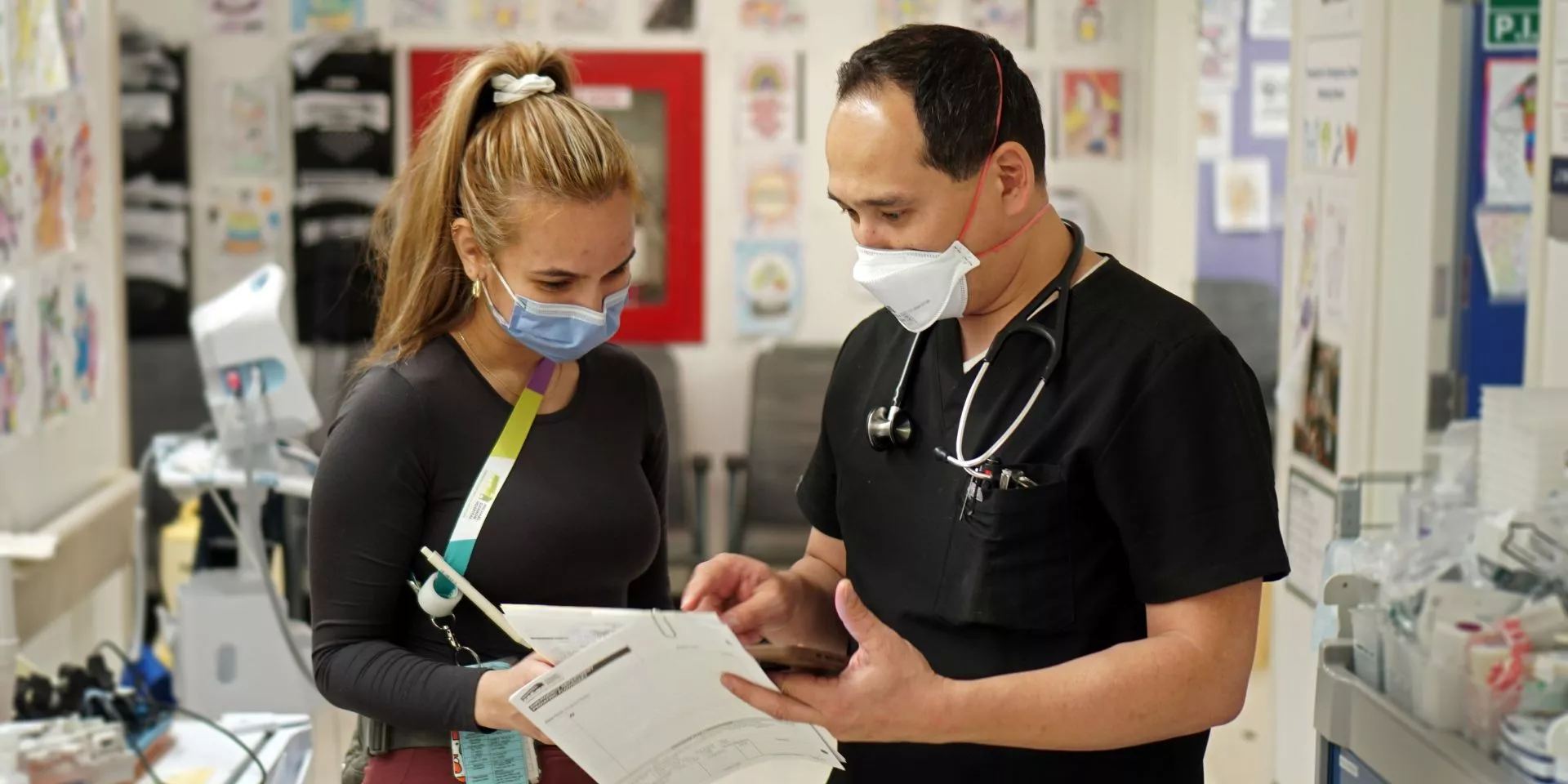Our Stavro Emergency Department (ED) saw more than 106,000 patients in 2024-2025, up nearly 23% from five years ago. Almost every patient is high acuity, meaning their health conditions are severe and complex.
Limited by facilities designed for less than half as many patients, our team finds innovative ways to ensure high-quality care. Impressively, our ED is among the province’s top performers, with shorter wait times for our patients compared to the Ontario average.
“In the face of our strained healthcare system, we’re proud of our team’s ingenuity in adapting resources to deliver the highest quality care for our patients,” says Dr. Kyle Vojdani, Chief and Medical Director of the ED.
Accommodating more patients when admissions surge
During cold and flu season, more patients need emergency care for respiratory illnesses. Their numbers hit record levels this winter, more than doubling the daily admission average.
To accommodate the surge, space adjacent to the ED was adapted to provide 12 temporary beds supported by team-based nursing. Before patients left the hospital, the team connected them with specialized care and community-based programs to ensure a smooth and safe transition home.
Expanded space for emergency care
Another example of the team’s nimble approach came in March. To ease crowding in some of the ED’s busiest areas, they created a Rapid Assessment Zone for people with non-life-threatening conditions. With capacity to treat 100 patients a day, it provides a quieter, more comfortable experience with shorter wait times.
This has resulted in improved patient and staff satisfaction and fewer instances of aggressive behaviour. “While emergency departments generally receive little favourable feedback from patients, an overwhelming proportion of comments we receive are positive,” says Dr. Vojdani
AI tool gives physicians more time with patients
Our team embraces digital solutions and shares learnings to help other emergency departments implement similar technologies. ED physicians funded use of new software that made them some of the first in Canada leveraging artificial intelligence to avail time and attention for patient care.
With a patient’s consent, a scribe tool creates notes during their conversation, allowing their physician to focus solely on the patient. The physician later reviews their charts and makes any necessary updates, saving up to two hours per shift. This time is used to see more patients and strengthen doctor-patient connections, all while reducing the risk of burnout associated with healthcare’s growing administrative workload.
Support exceptional care at Michael Garron Hospital by donating today.
